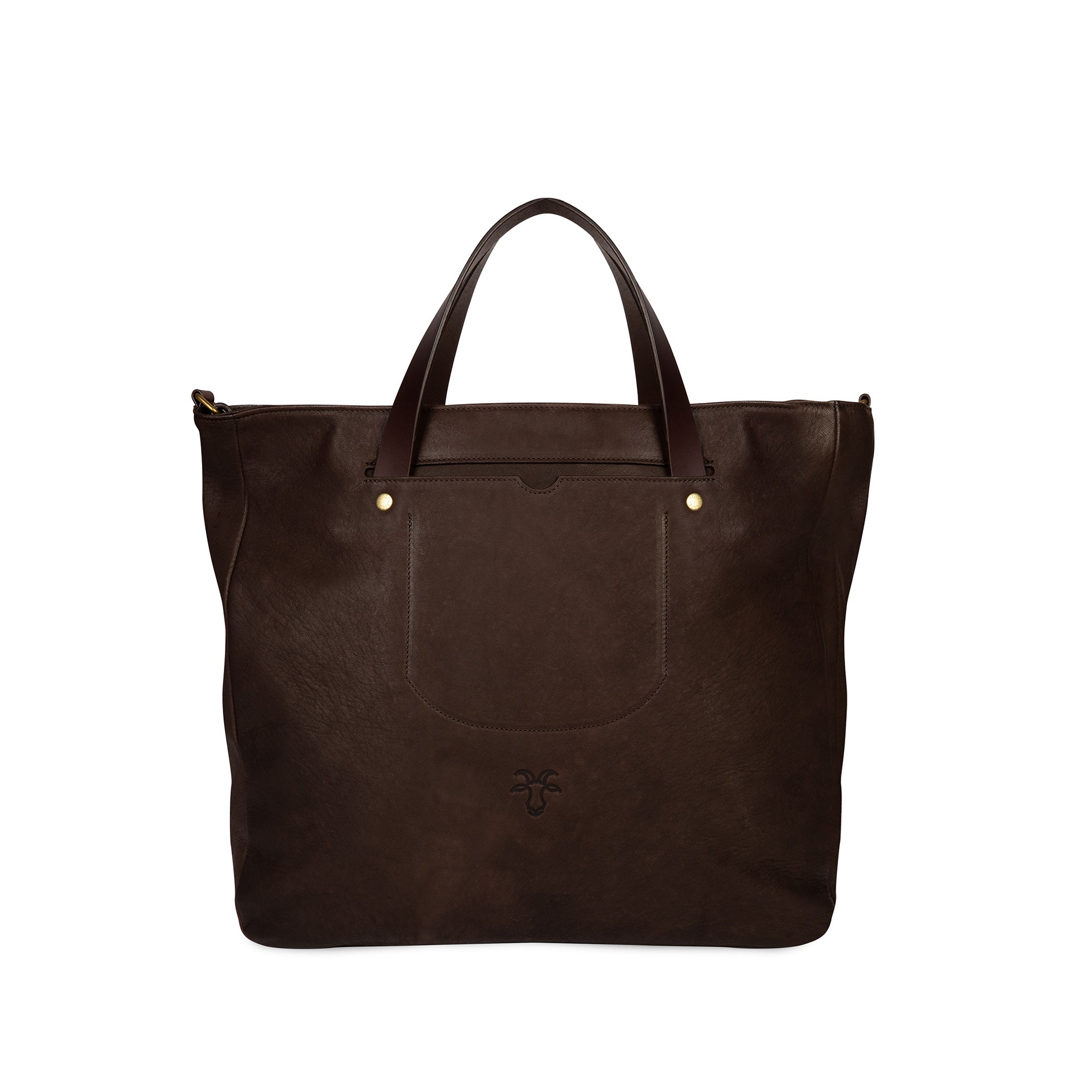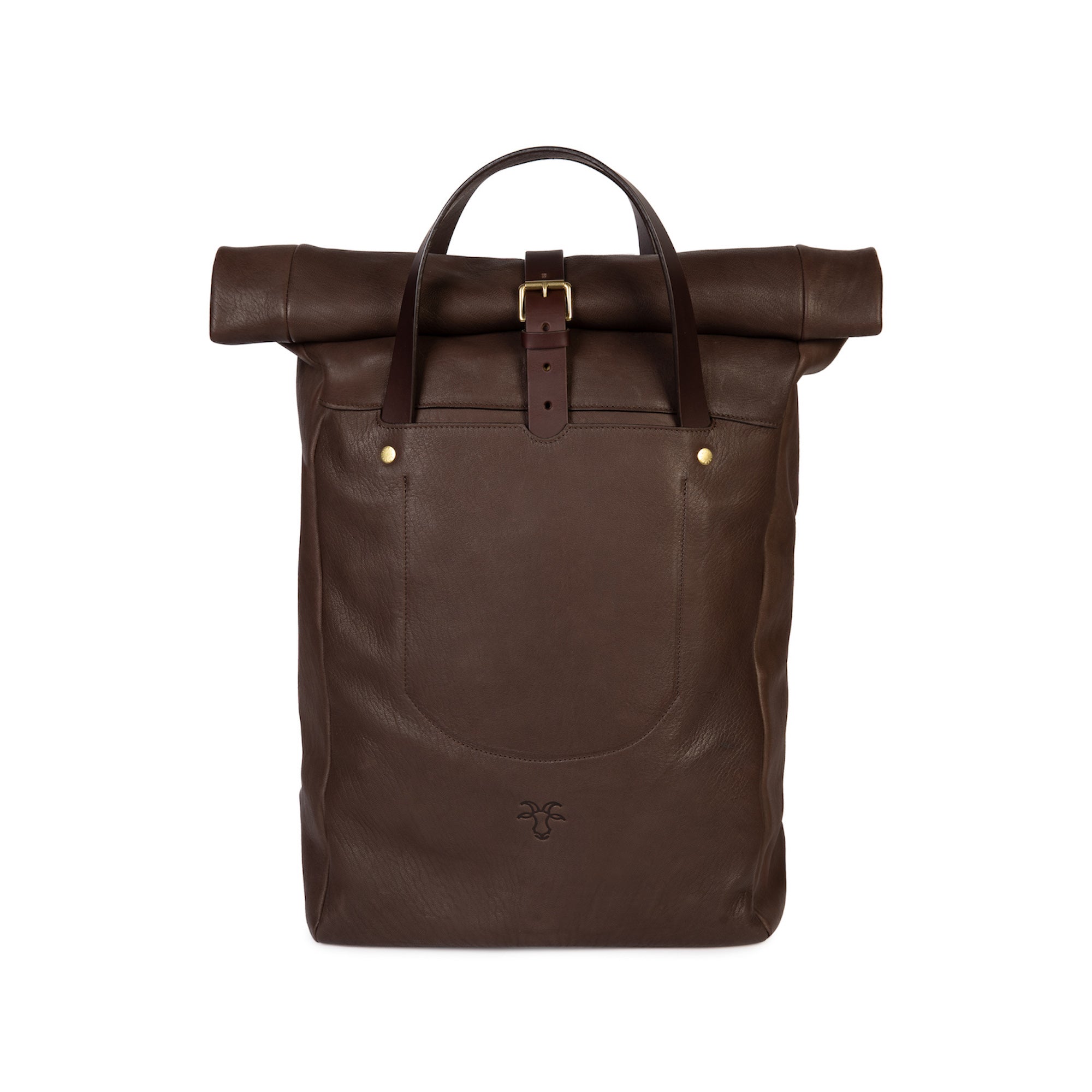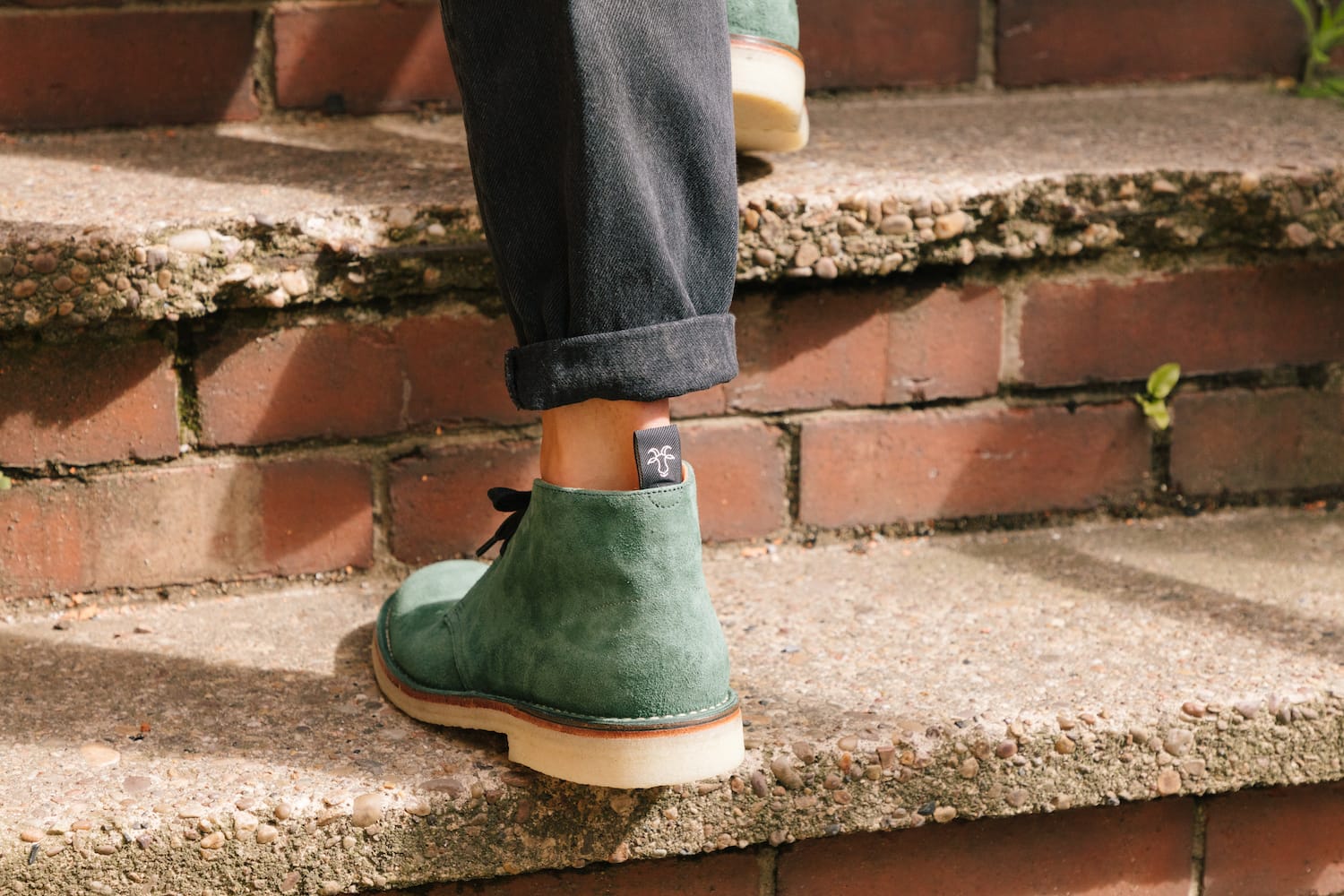If you are after some goat recipes, there is no one more knowledgeable than Jeremy Lee, chef proprietor at the historic Soho restaurant and private members club Quo Vadis. Jeremy has been pioneering cooking with goat meat ever since he received his first delivery from James Whetlor, the founder of Cabrito, in 2012, with kid now a staple on his quirky John Broadley illustrated menus. We arrange to meet in The Blue Room, a beautiful little snug tucked away on the second floor of Quo Vadis, where you can enjoy relative peace and quiet, away from the hustle and bustle of the restaurant.
From Jeremy’s emails I am expecting to be greeted by a bubbly, playful character and am not disappointed. Jeremy swings open the door and bounces into the room apologising profusely for his tardiness before embracing me in an almighty bear hug. Clad in a tailored work shirt, horn-rimmed spectacles, and custom-made Oliver Spencer Boots with his Billy Tannery backpack, already soft and supple, slung over his shoulder, it is obvious Jeremy has a penchant for well made things. Over coffee, Jeremy educated me on the virtues of goats, not only as a source of delicious food but also as a source of beautiful leather.

Photo: Tim Atkins
Does your interest in food stem from your childhood in Scotland?
I lucked out with two extraordinary parents, who loved food and all the good things in life. We didn’t have much money so everything mattered. Out of necessity and frugality comes great invention. Mum was a talented cook who read voraciously; her cook books were a huge inspiration, they intrigued a young boy growing up. I remember watching my mum who would have a fag in one hand, a coffee in the other, and a finger scrolling down a cookbook and then turning the page until she settled on a recipe she liked. By the time I arrived in London as a young chef I had on the one hand a classic apprenticeship under my belt from working in local kitchens in Scotland, and on the other hand this very lovely home life, which began to gel nicely in London.What was your first big breakthrough in your career?
The real breakthrough was getting a job with Simon Hopkinson at Bibendum where the stars aligned. That ilk of cooking French provincial cuisine with beautiful produce was so inspiring. I then went to work with Alistair Little who was very wild and free, he was a much more rebellious character than Simon who wanted spirit and verve in his food. Both experiences had a profound impact on me. When I was cooking with them, extraordinarily beautiful cook books kept coming out, wave upon wave of them, crashing on the shore. They made Michelin star cooking very desirable, you wanted to cook as much as you wanted to eat.How did your time at The Blueprint Café at The Design Museum influence you?
Terrence Conran gave me an amazing opportunity when he asked me to join The Blueprint; he saw the potential of having a beautiful dining hall in a beautiful location like The Design Museum. He blew away that myth of museum food being a rubbish bowl of soup and a bag of crisps for a fiver. It was an amazing, unique location, a real gold hall of magnificent architecture, style, and food, all married under one roof. Terrence let me stumble around in the dark a lot and experiment with my cooking, which is very unusual position for a chef– the crack of the whip usually comes quickly and swiftly.
Photo: William Waterworth
When did you start to notice a shift in the provenance of food in London?
Farmers Markets were almost an overnight success. Borough Market opened and the quality of produce was amazing; it was not just Italian Salami, but also amazing vegetables. The great monopoly of the supermarkets was broken, all this boring food in plastic bags, available 24/7, all year round, was exposed – you might eat a raw carrot from a supermarket but if it would have any nutrients it was a miracle – suddenly you had stuff covered in soil that tasted of something and you could make the soups your grandmother used to make which I could not make before because you bought a suede and carrot and it was just this orange stuff. Now we talk seasonal, we talk foraged, we talk wild food, we talk small holdings and things like that. It is brilliant that it has gone into day to day life; although it is still only for a few, wherever it may thrive let it grow.When did you first become aware of the qualities of goat meat?
I think we were James Whetlor’s [Founder of Cabrito] first customers, one of the first things he did when he passed his driving test was to pop a goat in the boot and bring it to Quo Vadis, it is a very endearing story. I was starting to notice that pork, lamb and beef of every age and variety you could imagine were being served. So, I started looking at other things, such as James’s Kid and Richard Vaughan’s rare breed pork and Boar. There is an extraordinary crowd of unsung heroes in animal welfare, husbandry, and farming that have kept some of these remarkable rare breeds going. Admittedly it was only on a small scale but that is all we needed because menus changed daily and we could slip these new things in.What was the reaction from your customers when goat started appearing on the menu?
We had amazing illustrated menus, and most folk were intrigued by the dishes we were introducing, such as kid pie, kid and chips, mutton and faggot. Folk trusted us and were curious to try rather than suspicious. There was a lot of stumbling around in the dark. I remember one day breaking down a whole goat carcass to make a beautiful braise and stew and steamed kid syrup puddings which were delicious, after that we thought this is here to stay.
Photo: Tim Atkins
Have you always been interested in the “Nose to Tail” philosophy?
When Fergus Henderson coined that term “a kinder British cooking”, the world changed forever. Fergus brought British cooking out of the shadows into daylight; suddenly devilled kidneys and offal started to appear on menus again, things that you hadn’t seen in years. People were guzzling them down, not only did it speak of nostalgia they were also delicious. Fergus talked about how if you are going to kill an animal, it is polite to use the whole thing, if you eat the chops you should also eat the liver.Did you ever make that connection between the “Nose to Tail” philosophy and using skin for leather?
When I met the boys at Billy Tannery, I thought this is so bloody brilliant. If you go to the killing of a pig it is a profound thing, after two days there is not so much as a toenail of pig that is not used. The same thing should happen for sheep, cattle and goats. You should use it all, and kid leather is also lovely. It is not like slaughtering whales for face cream, there is a benefit as well as a beauty.You are obviously interested in style, where does that come from?
Mum and dad were very stylish so I suppose it comes from them. I love brands like Margaret Howell and Oliver Spencer, well-made clothes, by good folk using good quality cloth. I love craftsmen, potters, weavers, basket makers and so on. I like to sit down at a beautifully made table with amazing glasses and pottery.How are you finding your new Billy Tannery backpack?
I had just been told by the doctor that I should stop using a shoulder bag and get a new backpack. I was looking at these strange nylon mountaineering things but they weren’t for me – take me out of wool, cotton, hand stitched or handmade and that is a step too far. When I met the Billy Tannery boys, the stars aligned. They had this amazing backpack made from kid leather, which was beautifully designed. You can cram all sorts in there, it is well padded, comfy as anything and I love tan leather. It is an amazing colour and already softening; I love it so much, it is a great friend and getting all sort compliments from folk.
Find out more about our full range of leather rucksacks.
Words: Louis Supple
Photography: William Waterworth & Tim Atkins


































